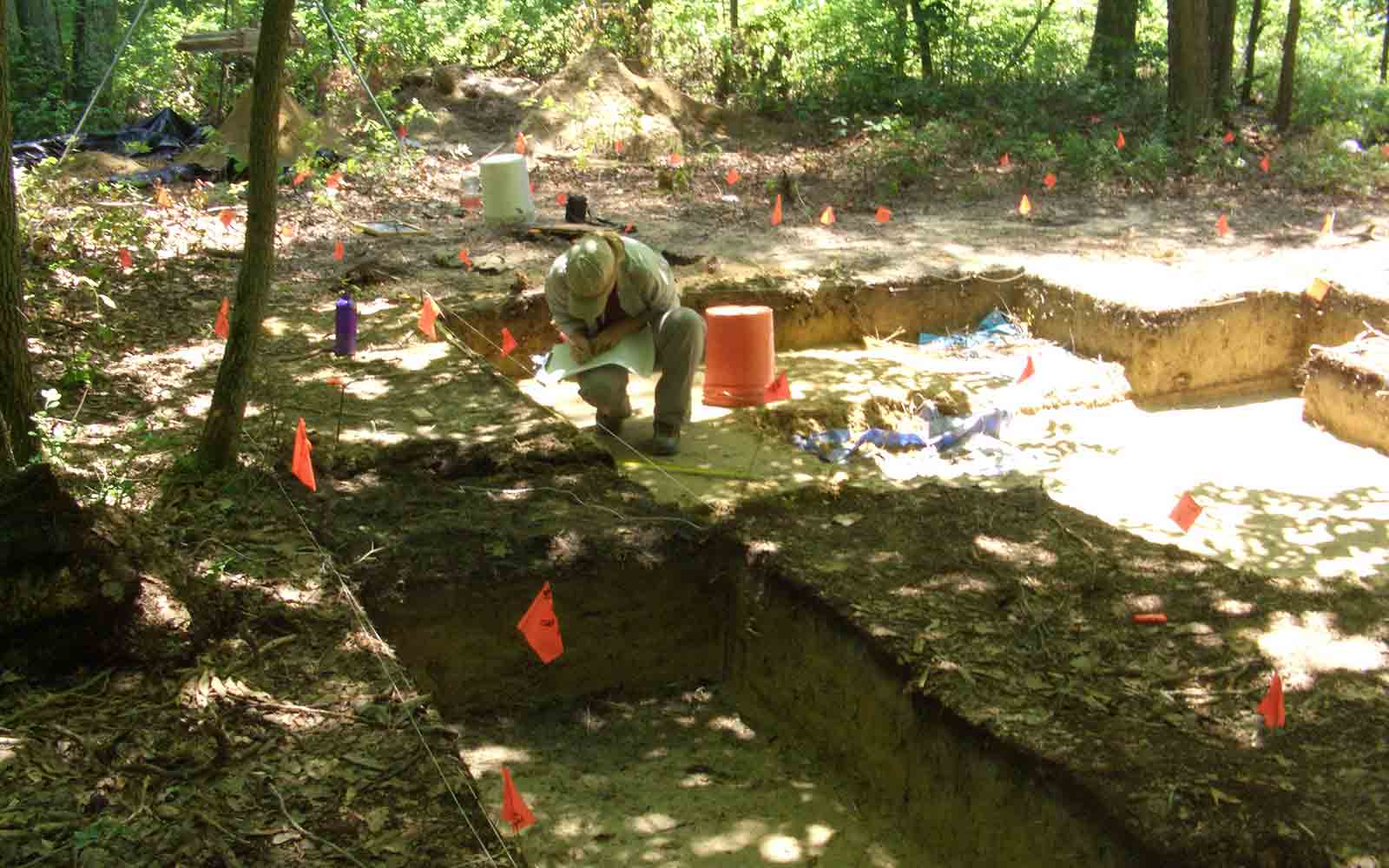Essentially, a Phase III data recovery is the last opportunity to recover important information on a significant site determined eligible for listing on the National Register in order to mitigate potential irreversible impacts by the site by extracting potentially significant data. The mitigation process begins with extensive communication with all consulting parties that result in a Memorandum of Understanding (MOU) or Archaeological Mitigation Data Recovery Work Plan that govern not only the archaeological investigations, but all future treatment plans, public outreach programs, and final project curation requirements. These agreements serve to ensure that the maximum amount of information concerning the site is recovered, analyzed, and curated prior to project impacts.
The individual MOUs or work plans for data recoveries vary greatly depending on the type of site being investigated, but generally include the excavations of test units or large unit blocks. It can also include the mechanical removal of overlying soils such as plowzones or artificial fill horizons to expose intact contexts beneath. Phase III archaeological projects are usually sensitive and require extensive consultation and public involvement.



